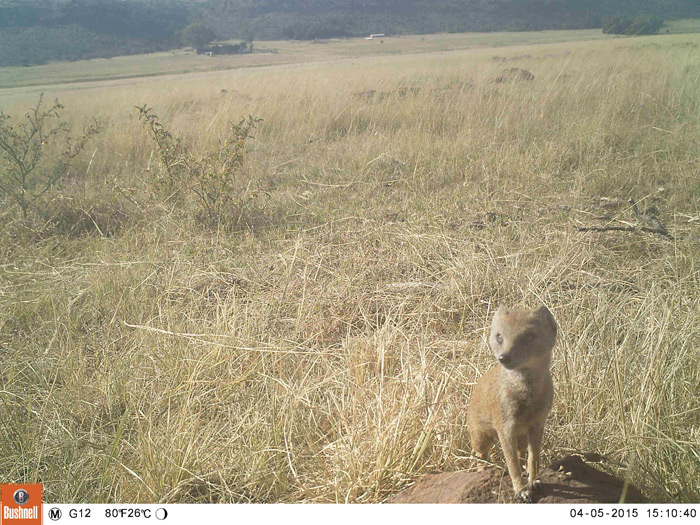|
Jump to: iCWild's work · Key insights · Project team · Collaborators and funders · Outputs |
Conflict between humans and mesocarnivores is rampant given the risk the animals present to disease transmission (e.g., rabies), and their dietary preference for livestock. The resultant lack of tolerance of mesocarnivores in urban and agricultural lands, means that protected areas (PAs) are often presumed to support a higher diversity and abundance of mesocarnivores. Yet this may not be the case, as PAs face a wide variety of threats, such as invasive species, human-wildlife conflict and wildlife and environmental exploitation along the periphery, which can reduce their conservation potential.
Key insights
We need to focus on conserving biodiversity beyond the limits of protected areas.
Mesocarnivore species richness was negatively affected by the presence of leopards (in PAs) and domestic dogs (outside of PAs), and as a result was highest along the edges of PAs. This suggests that PAs on their own can fail to conserve mesocarnivores (at least in the KZN area), and that instead effectively conserving all carnivores requires landscape-level conservation plans. Our results also call for increased focus on mesocarnivore populations outside of PAs, and better control of the culling and eradication of mesocarnivores that is prevalent in human-dominated landscapes.
Key audiences need to understand the role mesocarnivores play in ecosystems.
Mesocarnivores are critical for ecosystem function, and provide important ecosystem services. Communicating this information to key audiences could increase tolerance to mesocarnivores in transformed landscapes.
Camera traps deliver even more value than you first think.
Camera-trap data derived from a species specific survey (e.g, leopards), can be used in a multi-species hierarchical modeling framework to great success. This result is important for PAs that experience challenges in research scale and costs, by highlighting that a single study can be used to explore multiple different questions.
Project team
|
Michelle Pretorius (iCWild), MSc candidate and Project contact Prof M Justin O’Riain (iCWild), supervisor Dr Gareth Mann (Panthera), co-supervisor |
Collaborators and funders
Related outputs
Click here to view iCWild's full output list, and use the filter tool to view outputs related to Kwazulu-Natal Mesocarnivores.


